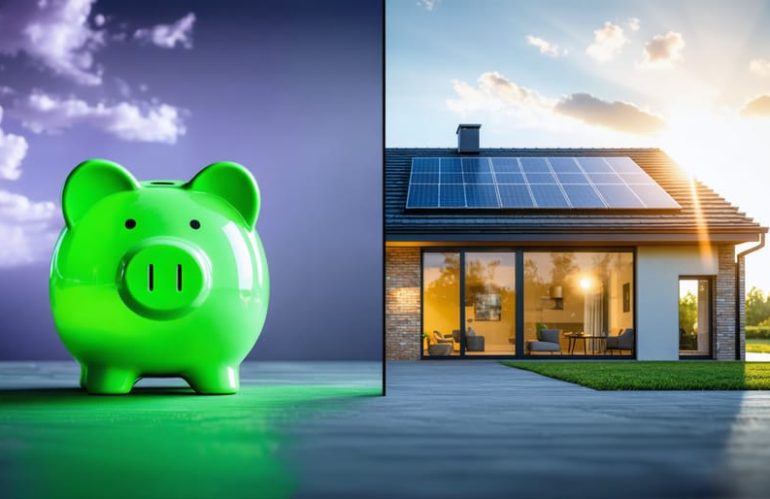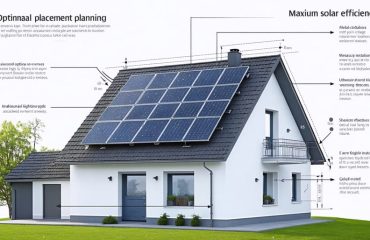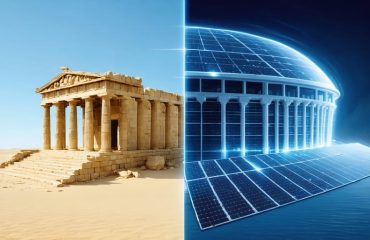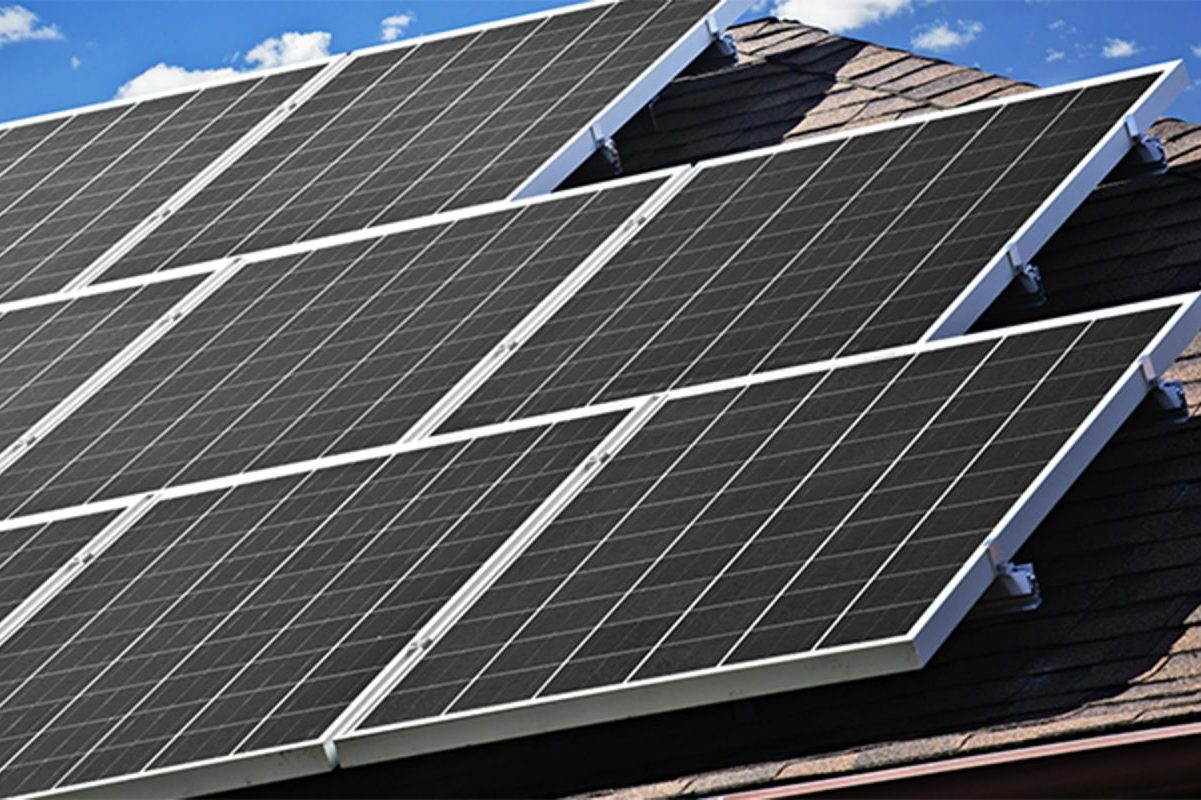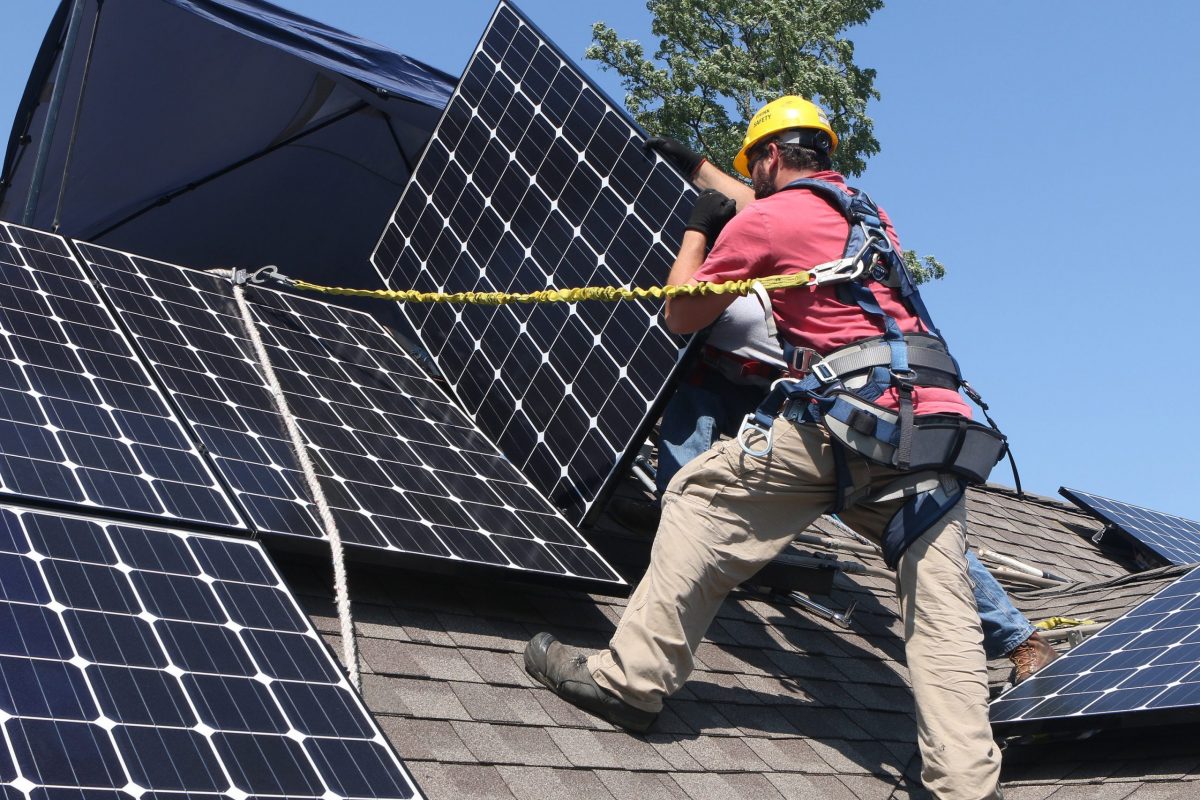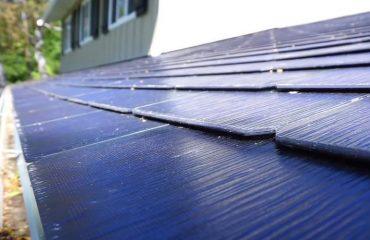Transform your home’s energy future without upfront costs through zero-interest solar loans – a game-changing financing option that’s making installing solar panels more accessible than ever. These specialized loans combine the environmental benefits of renewable energy with unmatched financial advantages, allowing homeowners to start saving on electricity bills from day one while paying for their solar system over time, interest-free.
Unlike traditional home improvement loans or solar leases, zero-interest solar loans offer a unique opportunity to own your system outright while spreading the cost over manageable monthly payments. This innovative financing solution eliminates the primary barrier to solar adoption – the initial investment – while maximizing long-term savings through complete ownership and utility bill reduction.
Whether you’re looking to reduce your carbon footprint or secure energy independence, zero-interest solar loans provide a smart pathway to sustainable home ownership without compromising your financial stability.
How Zero Interest Solar Loans Work
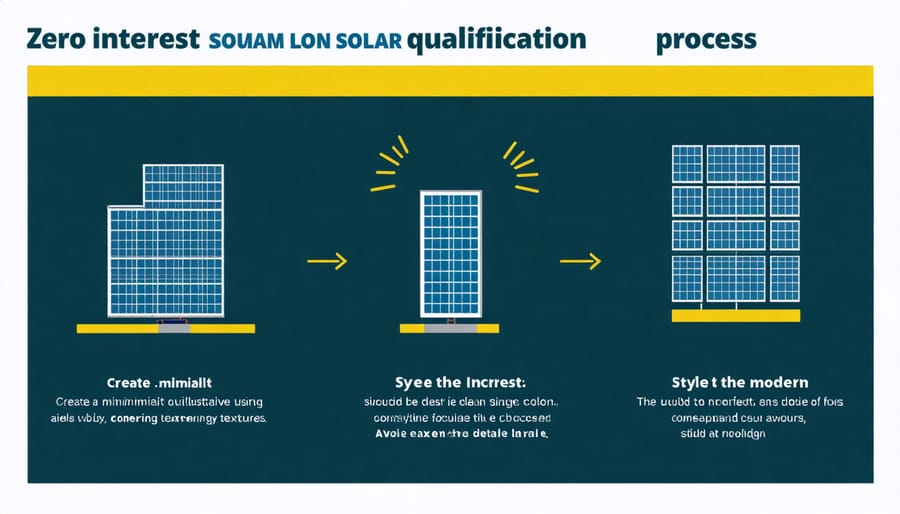
Qualification Requirements
To qualify for a zero interest solar loan, you’ll typically need a credit score of at least 640, though some lenders may require scores of 680 or higher. Most lenders will verify your income to ensure you can comfortably manage the monthly payments, usually requiring a debt-to-income ratio below 45%.
Homeownership is a primary requirement, as the solar installation will be permanently attached to your property. You’ll need to provide proof of ownership and ensure your home meets basic structural requirements for solar panel installation.
Additional qualification criteria often include:
– A clean title on your property
– Current on mortgage payments
– No recent bankruptcies
– Proof of steady employment or income
– Property insurance coverage
Many lenders also consider your utility payment history and may require at least one year of consistent, on-time payments. The size of your desired solar system and its cost relative to your income will also factor into the approval process.
Remember that requirements can vary significantly between lenders, so it’s worth shopping around to find the best terms for your situation.
Loan Terms and Conditions
Zero interest solar loans typically offer terms ranging from 5 to 20 years, with most homeowners opting for 10 to 15-year agreements. These loans are structured with fixed monthly payments, making it easier to budget for your solar investment. During the initial period, usually 12 to 18 months, you’ll enjoy zero interest on the loan balance, providing substantial savings compared to traditional financing options.
Most solar loan agreements require a down payment of 0-20%, depending on your credit score and the lender’s terms. Monthly payments are calculated by dividing the total loan amount by the number of months in your term, ensuring predictable installments throughout the repayment period.
Important contract details typically include:
– No prepayment penalties
– Secured vs. unsecured loan options
– Automatic payment requirements
– Maintenance agreement terms
– Transfer options if you sell your home
Be sure to review the interest rate that applies after the zero-interest period ends, as this will affect your long-term costs. Many lenders offer competitive rates that still make solar an attractive investment, especially when combined with energy savings and tax incentives.
Benefits of Zero Interest Solar Financing
Immediate Energy Savings
One of the most appealing aspects of zero-interest solar loans is the immediate positive impact on your monthly expenses. Many homeowners find that their monthly loan payments are actually lower than their current electricity bills, creating instant savings from day one. For example, if your monthly electric bill averages $200, your solar loan payment might be $150, putting an extra $50 in your pocket each month.
This financial advantage becomes even more significant when you consider rising electricity rates. While your loan payment remains fixed, traditional energy costs continue to increase year after year. The savings gap widens over time, providing growing financial benefits throughout the life of your solar system.
Additionally, many homeowners qualify for net metering programs, allowing them to sell excess energy back to the grid. This further reduces their monthly expenses and can sometimes result in credits on their utility bills. When combined with zero interest financing, these savings create a powerful financial incentive for going solar.
Once your loan is paid off, you’ll enjoy virtually free electricity for the remaining lifetime of your solar system, typically 25-30 years. This long-term benefit makes zero-interest solar loans an attractive option for budget-conscious homeowners looking to make a smart investment in their future.
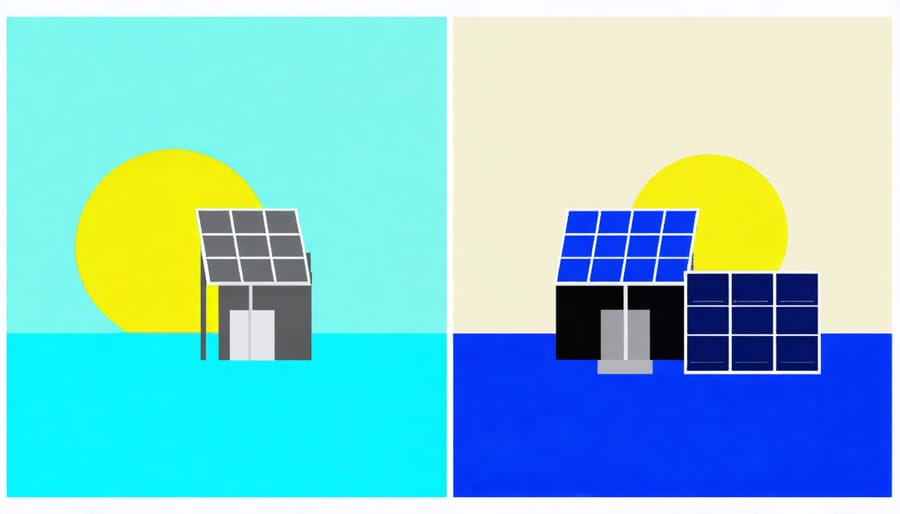
Tax Incentives and Rebates
One of the most attractive aspects of zero-interest solar loans is their compatibility with available solar tax incentives and rebates. When you finance your solar installation with a zero-interest loan, you can still take full advantage of the federal solar tax credit, which currently offers a 30% deduction on your solar system costs. This means you can claim the tax credit while benefiting from interest-free financing, maximizing your savings from day one.
State and local incentives also remain fully accessible when using zero-interest solar loans. These may include property tax exemptions, sales tax exemptions, and performance-based incentives that pay you for the energy your system produces. Many utility companies offer additional rebates that can be combined with your zero-interest financing, further reducing your overall investment.
The loan structure typically allows you to apply any tax credits or rebates you receive directly to your loan principal. This flexibility means you can significantly reduce your loan balance early in the repayment period, potentially shortening your loan term while maintaining the zero-interest benefit. It’s a smart way to make solar more affordable while preserving access to all available financial incentives.

Common Questions About Zero Interest Solar Loans
Hidden Fees and Costs
While zero interest solar loans offer attractive financing options, it’s important to understand potential additional costs that may arise. Most loans include an origination fee, typically ranging from 1.5% to 3% of the total loan amount, which covers processing and administrative costs. Some lenders may also charge documentation fees or appraisal fees, usually between $100-300.
Be aware that even with zero interest, dealer fees might be built into the total loan amount. These fees essentially compensate the lender for offering the zero-interest terms and can increase your total project cost by 5-10%. It’s crucial to review your loan agreement carefully and ask about any potential prepayment penalties.
Many solar loans also require you to maintain adequate homeowner’s insurance, which might slightly increase your insurance premiums. Additionally, some lenders charge late payment fees, typically around 5% of the monthly payment amount, if you miss a due date.
To avoid unexpected costs, always request a detailed breakdown of all fees before signing. Compare offers from multiple lenders, as fee structures can vary significantly. Remember that while these additional costs might seem substantial initially, they’re often outweighed by the long-term savings from solar energy and potential tax incentives. Just ensure you factor these fees into your overall budget planning to make an informed decision.
Loan vs. Lease Comparison
When comparing zero interest solar loans with other financing options, homeowners have several paths to consider. While solar leasing options may seem attractive due to their low upfront costs, zero interest loans often provide better long-term financial benefits. With a loan, you own the system outright and can take advantage of tax incentives and rebates, which typically aren’t available with leases.
Zero interest loans eliminate the burden of interest payments while maintaining the benefits of ownership. Unlike leases, which often include annual payment escalators and complex terms, these loans offer predictable monthly payments that eventually end. Once you’ve paid off the loan, you’ll own your solar system free and clear, maximizing your long-term savings.
Leasing typically means sharing the financial benefits with the leasing company, while loan financing allows you to keep all the energy savings for yourself. Additionally, solar loans generally increase your property value more than leases, as future buyers prefer homes with owned solar systems rather than inherited lease agreements.
Some homeowners worry about maintenance responsibilities with ownership, but many solar installers offer comprehensive warranty coverage and service plans similar to what you’d get with a lease, making zero interest loans an even more compelling choice.
Zero interest solar loans represent a game-changing opportunity for homeowners to embrace clean energy while maintaining financial flexibility. By eliminating interest charges, these financing options make solar power more accessible than ever before, allowing you to invest in your home’s future without the burden of additional costs.
The benefits are clear: immediate energy savings, increased home value, and environmental stewardship, all while spreading the cost of your solar installation over manageable monthly payments. With many programs offering terms ranging from 12 to 24 months interest-free, you can transition to solar power without touching your savings or increasing your monthly expenses.
Now is the perfect time to take advantage of these innovative financing solutions. Solar technology has never been more efficient or affordable, and zero interest loans remove the last major barrier to adoption. By combining these loans with available tax incentives and rebates, you can maximize your savings while contributing to a more sustainable future.
Don’t wait to explore your solar financing options. Contact local solar providers today to learn how zero interest loans can help you make the switch to clean, renewable energy while keeping your finances firmly in the green.

